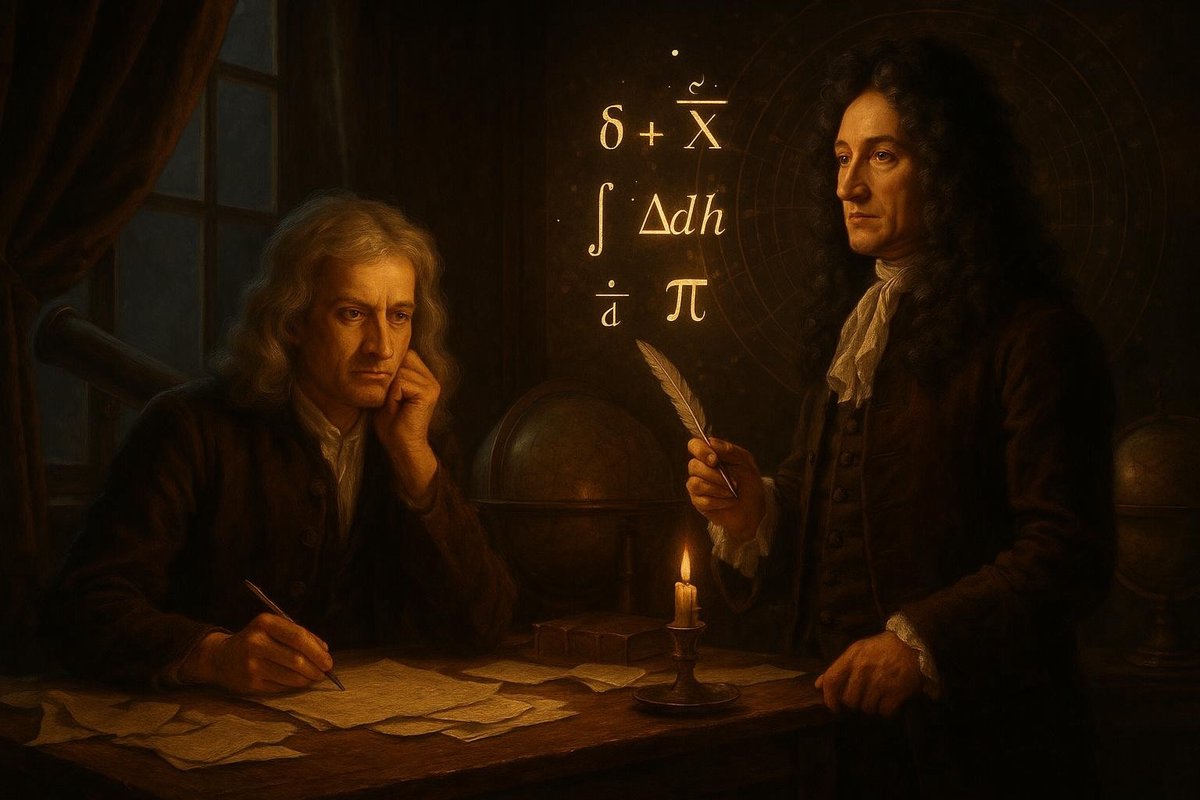
The Seeds of a New Idea: Understanding Motion and Change
Imagine standing at the edge of a cliff, watching the ocean waves crash below. Have you ever wondered about the force behind their relentless advance and retreat? This age-old question of motion and change puzzled minds long before the dawn of calculus.
Before the 17th century, thinkers like Aristotle and Galileo laid groundwork with theories of motion, but something was missing. They couldn’t precisely describe how things change over time. Many believe calculus answered this call, but the path to its rise was neither straightforward nor predictable.
Interestingly, calculus emerged from a confluence of personal passion and chance encounters between two intellectual titans: Isaac Newton and Gottfried Leibniz. Their rivalry and the subsequent controversy over who first discovered calculus is the stuff of legend. Yet, it was precisely this tension that pushed the boundaries of mathematics and science.
- Galileo’s work on motion set the stage for later breakthroughs.
- The need to understand planetary orbits spurred interest in dynamic change.
- Early mathematical tools were inadequate for describing continuous growth.
A Revolutionary Breakthrough: Newton and Leibniz
In the late 1600s, two brilliant minds independently arrived at similar conclusions, yet through different paths. Isaac Newton, an introspective genius, worked in the isolation of Cambridge, England. His intellectual approach was methodical, driven by a need to understand the world’s physical principles.
Gottfried Leibniz, on the other hand, was a polymath whose curiosity spanned many fields. While Newton developed calculus to address specific problems in physics, Leibniz approached it as a new mathematical language. Their twin discoveries marked a turning point in history.
Of course, their rivalry was as intense as their discoveries were sublime. Each accused the other of plagiarism, sparking a bitter feud that would divide the scientific community for years. Yet, this very rivalry fueled further developments in calculus, pushing both men to refine and expand their ideas.
- Newton’s ‘fluxions’ focused on rates of change in time.
- Leibniz’s notation, distinct and elegant, is still used today.
- Their discord highlighted the role of competition in scientific progress.
Evidence in Motion: Proving Calculus’ Worth
Calculus’ power lay in its ability to describe change, a property that resonated far beyond theoretical physics. It offered a new perspective on everything from the trajectory of planets to the growth of populations. But proving its worth required more than elegant equations; it needed validation through real-world application.
One story stands out: Edmond Halley, motivated by Newton’s ideas, predicted the return of a comet, now known as Halley’s Comet. This prediction, realized in 1758, was a triumph of calculus and cemented its place in science.
As time goes on, the utility of calculus became undeniable. It enabled engineers to build bridges and architects to design skyscrapers. No wonder Newton and Leibniz’s work, though contentious, was heralded as revolutionary.
- Calculus explained previously mysterious astronomical events.
- Engineers harnessed its power to create enduring structures.
- Its principles were foundational to later scientific revolutions.
Modern Relevance: Calculus’ Lasting Impact
Today, calculus is the backbone of modern science and engineering. Its principles guide everything from the design of computer algorithms to economic modeling, and even the understanding of climate change. The methodologies developed by Newton and Leibniz have transcended their times to shape our world in unexpected ways.
Interestingly, the collaborative and competitive spirit that birthed calculus persists in modern scientific endeavors. In fields like artificial intelligence and quantum computing, researchers build upon each other’s work, echoing the historical interplay of Newton and Leibniz.
The rise of calculus teaches us an enduring lesson about the interplay of passion, chance, and rivalry in innovation. Who could have imagined that a bitter academic feud would yield tools that touch every aspect of modern life?
- Calculus remains essential in advanced fields like machine learning.
- It continues to inform policy decisions in economics and health.
- Its foundational concepts inspire new generations of thinkers.
Calculus is more than a branch of mathematics; it’s a testament to human curiosity and perseverance. Like the ocean waves, the ripples of its discovery continue to shape our world.
Fuel Someone Else’s Curiosity
We invite you to share this story, sparking conversations about the fascinating blend of passion and serendipity that fuels discovery. Discuss with friends or colleagues how the ideas from centuries ago still influence our lives today. Let’s keep the spirit of curiosity alive and vibrant.

Leave a Reply